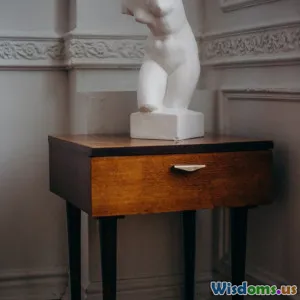
Beauty Insights from Ancient Civilizations
5 min read Explore the timeless beauty secrets and practices from ancient civilizations that continue to influence modern beauty standards. (0 Reviews)
Beauty Insights from Ancient Civilizations
Throughout history, beauty has been a crucial aspect of many cultures, influencing standards, rituals, and practices that persist to this day. Ancient civilizations crafted unique beauty regimes that not only highlighted their aesthetics but also held cultural significance. This article delves into the beauty insights gleaned from ancient Egypt, Greece, Rome, and the Far East, revealing how they inform contemporary beauty practices.
Ancient Egypt: The Birthplace of Beauty Rituals
Egyptians are renowned for their advanced beauty practices, integrating health with aesthetics. They believed that beauty was a reflection of divine favor. Here are some essential insights:
1. Kohl and Eye Makeup
Kohl, made from crushed minerals, was used to define the eyes and protect against the sun and infections. Today, the use of eyeliner and eyeshadow can trace their roots back to these ancient practices, emphasizing the eyes as a focal point in beauty.
2. Oils and Fragrances
Egyptians used almond oil and other natural oils to moisturize their skin and hair. The significance of scent was paramount, leading to the creation of perfumes that were considered sacred. Modern beauty products often incorporate similar oils for hydration and fragrance, echoing these ancient practices.
Ancient Greece: The Pursuit of Perfection
In ancient Greece, beauty was closely tied to physical fitness and health. The Greeks celebrated the natural form, often using beauty treatments that highlighted the body's natural allure.
1. Olive Oil Treatments
Olive oil was revered for its nourishing properties. It was used for skincare and hair treatments. Today, many skincare products still harness the benefits of olive oil, promoting hydration and glow.
2. Natural Ingredients
Greeks often utilized natural ingredients like honey, beeswax, and herbs for beauty treatments. This laid the foundation for the clean beauty movement we witness today, emphasizing the use of natural and organic products.
Ancient Rome: The Influence of Social Status
In Rome, beauty routines were heavily influenced by social class. The elite had access to luxurious beauty treatments, while commoners had to make do with simpler methods.
1. Bathing Rituals
Romans were known for their elaborate bathing rituals, often using scented oils, scrubs, and herbal infusions. This practice emphasized hygiene and relaxation, which are central to today’s spa culture.
2. Use of Lead and Other Dangerous Products
While Romans did have some beneficial beauty practices, they also resorted to harmful substances like lead for skin lightening. This starkly contrasts modern beauty standards, which prioritize health and safety in product formulations.
The Far East: A Holistic Approach
Eastern civilizations, particularly in China and Japan, approached beauty holistically, integrating health, diet, and lifestyle into their beauty practices.
1. Green Tea and Herbal Remedies
Green tea is a staple in Japanese beauty routines, known for its antioxidant properties. It is often included in skincare products today, reflecting the ancient belief in the healing properties of nature.
2. Gua Sha and Acupuncture
Ancient Chinese practices like Gua Sha and acupuncture emphasize the balance of energy within the body. These techniques have gained popularity in modern beauty for their ability to enhance skin health and promote relaxation.
Conclusion
The beauty insights from ancient civilizations provide a rich tapestry of knowledge that continues to influence modern beauty practices. By revisiting these longstanding traditions, we can appreciate the wisdom behind them and incorporate elements that celebrate our natural beauty. Whether it's through the use of natural ingredients, the embrace of holistic practices, or the timeless allure of makeup, the echoes of our ancestors shape the way we view and approach beauty today. Embracing these insights can lead us to more meaningful and sustainable beauty routines that honor both history and health.
Rate the Post
User Reviews
Popular Posts

















